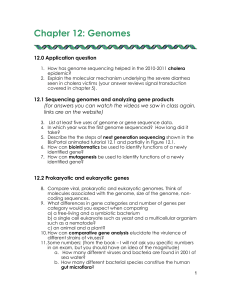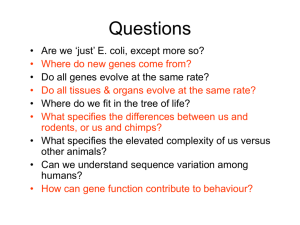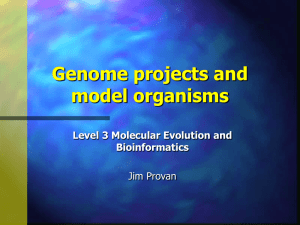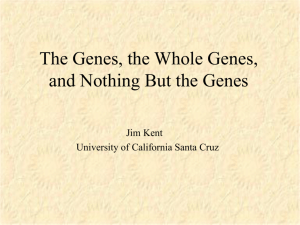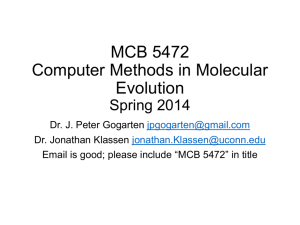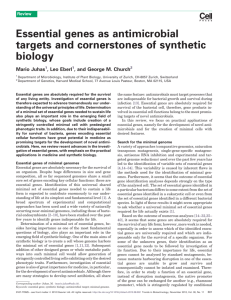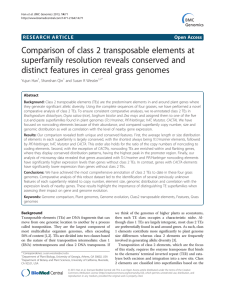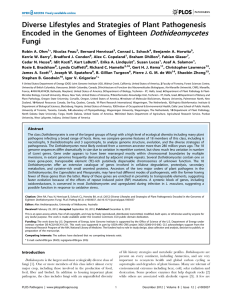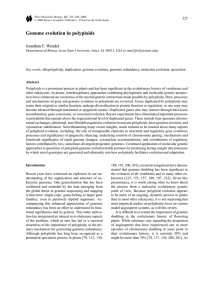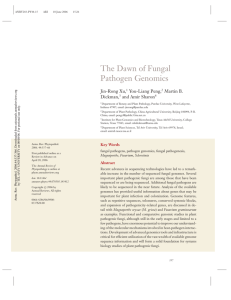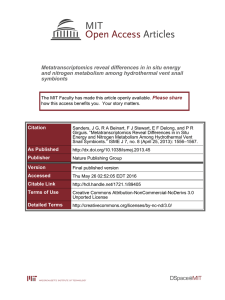Study of the evolution of animal parasite bacteria and plant symbionts
advertisement
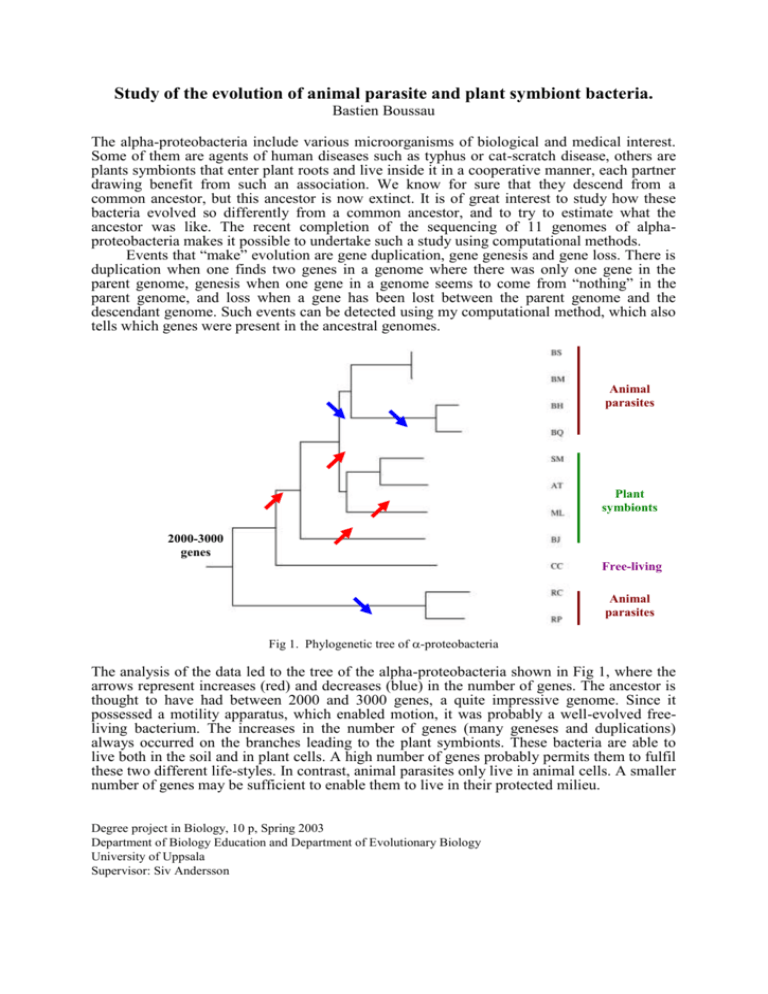
Study of the evolution of animal parasite and plant symbiont bacteria. Bastien Boussau The alpha-proteobacteria include various microorganisms of biological and medical interest. Some of them are agents of human diseases such as typhus or cat-scratch disease, others are plants symbionts that enter plant roots and live inside it in a cooperative manner, each partner drawing benefit from such an association. We know for sure that they descend from a common ancestor, but this ancestor is now extinct. It is of great interest to study how these bacteria evolved so differently from a common ancestor, and to try to estimate what the ancestor was like. The recent completion of the sequencing of 11 genomes of alphaproteobacteria makes it possible to undertake such a study using computational methods. Events that “make” evolution are gene duplication, gene genesis and gene loss. There is duplication when one finds two genes in a genome where there was only one gene in the parent genome, genesis when one gene in a genome seems to come from “nothing” in the parent genome, and loss when a gene has been lost between the parent genome and the descendant genome. Such events can be detected using my computational method, which also tells which genes were present in the ancestral genomes. Animal parasites Plant symbionts 2000-3000 genes Free-living Animal parasites Fig 1. Phylogenetic tree of -proteobacteria The analysis of the data led to the tree of the alpha-proteobacteria shown in Fig 1, where the arrows represent increases (red) and decreases (blue) in the number of genes. The ancestor is thought to have had between 2000 and 3000 genes, a quite impressive genome. Since it possessed a motility apparatus, which enabled motion, it was probably a well-evolved freeliving bacterium. The increases in the number of genes (many geneses and duplications) always occurred on the branches leading to the plant symbionts. These bacteria are able to live both in the soil and in plant cells. A high number of genes probably permits them to fulfil these two different life-styles. In contrast, animal parasites only live in animal cells. A smaller number of genes may be sufficient to enable them to live in their protected milieu. Degree project in Biology, 10 p, Spring 2003 Department of Biology Education and Department of Evolutionary Biology University of Uppsala Supervisor: Siv Andersson







